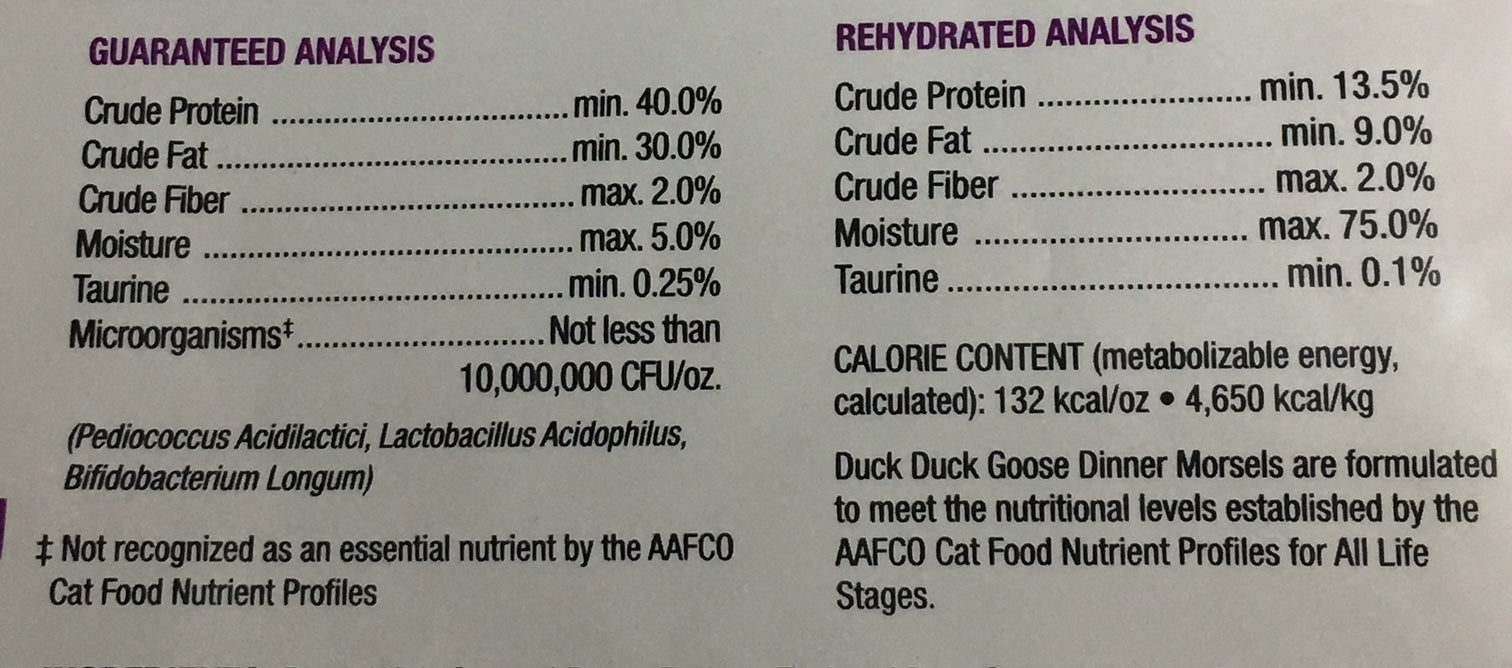How many times have you looked at the nutrition box on the label of the pet food you purchase? Currently, it lists protein, moisture, fat, and fiber content, as well as calorie content and a few vitamins and minerals. There has been a push to make pet food labels more “user friendly” for consumers. Unfortunately, after listening to the conversation that took place at the AAFCO meeting, I’m convinced the industry representatives are trying to make this situation worse for consumers.
The labeling was broken down into four components, with four “workgroups” (subcommittees) working on new labelling. The four considerations are: nutrition facts box, adequacy statement, safety statement and feeding directions.
The nutritional adequacy group actually came up with something that would be helpful for consumers. They want to put a black and white circle or box on the bottom right corner of packaging that will state whether the product is complete and balanced or to be fed only as a snack or for supplemental feeding. It would also state the life stage: whether the product was appropriate for all life stages, adults only, small and medium breed puppies, or large breed puppies. I think it would be helpful for pet owners to be able to determine, at a glance, that they were buying an age-appropriate formula.
The feeding directions group had the goal of providing education to help consumers make better feeding choices (ie – don’t leave a bowl of kibble out all day for free-choice feeding). Unfortunately, it seemed they ultimately decided it was too complicated to put on the packaging, so consumers would be directed to a website to look at a PFMA Dog Size-O-Meter chart (seriously!) with expanded feeding directions. I guess if you don’t have computer access to go to a website to figure out how much to feed your out how much to feed your pet, you get to use your best judgement.
The pet nutrition facts group worked on the nutrition box, in the hopes of making it look more closely aligned with the nutrition facts label on human food packaging. They did state that the new facts box should include calories per measure (ie-calories per cup) and calories per nutrient (ie- grams of fat, grams of protein, etc). It was requested by a consumer advocate that the label more closely align with labeling in Europe which states how many grams of each ingredient are in the product. Wouldn’t it be nice to know the product contains 50 grams of chicken and 80 grams of peas? Currently, it’s anyone’s guess as to how much of the product is meat versus carbohydrate versus fiber. It was also requested that guaranteed amounts of salt, calcium, copper, and phosphorous be placed on the label, since these ingredients are very important when pets are suffering from heart, kidney, or liver disease.
The last part of labeling was the ingredient section. Pet food consumers want clarity and transparency in ingredient listing. In recent years, pet food manufacturers have succeeded in getting name changes for ingredients, hiding the reality of the ingredients in the bag. For instance, hydrolyzed chicken feathers are now hydrolyzed poultry protein isolate. How many consumers would know what the ingredient actually included?
The committee members wanted to change language on the label to state “may contain less than 2% of …”, which makes it impossible to know if a certain product was or was not included in that product. It was stated this would make it easier for manufacturers to switch between types of oils or fish meal used, depending on market availability and price. You can bet this recommendation came from manufacturers on the low end of the spectrum. The statement at the meeting was “fish is fish and oil is oil, what difference does it make?” SERIOUSLY?????? If I have a pet that cannot tolerate salmon oil but can tolerate white fish oil, you can bet it makes a difference!
They also wanted to list vitamins and minerals without the chemical names. Just say, includes vitamins A, B, C, D, E, K……..NOT acceptable! I want to know the source of the vitamins and minerals. I don’t want to see sulfated minerals in food for my pets. This “simplification” is one more way to hide ingredients from consumers.

